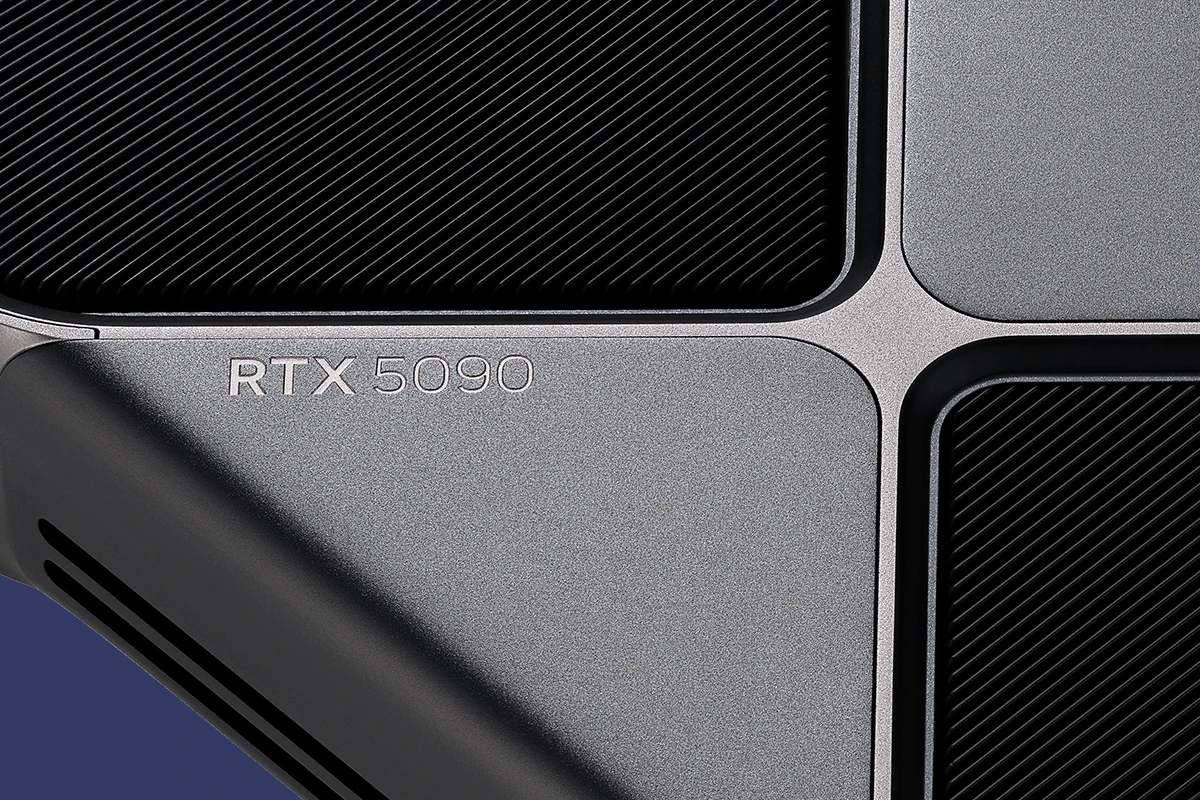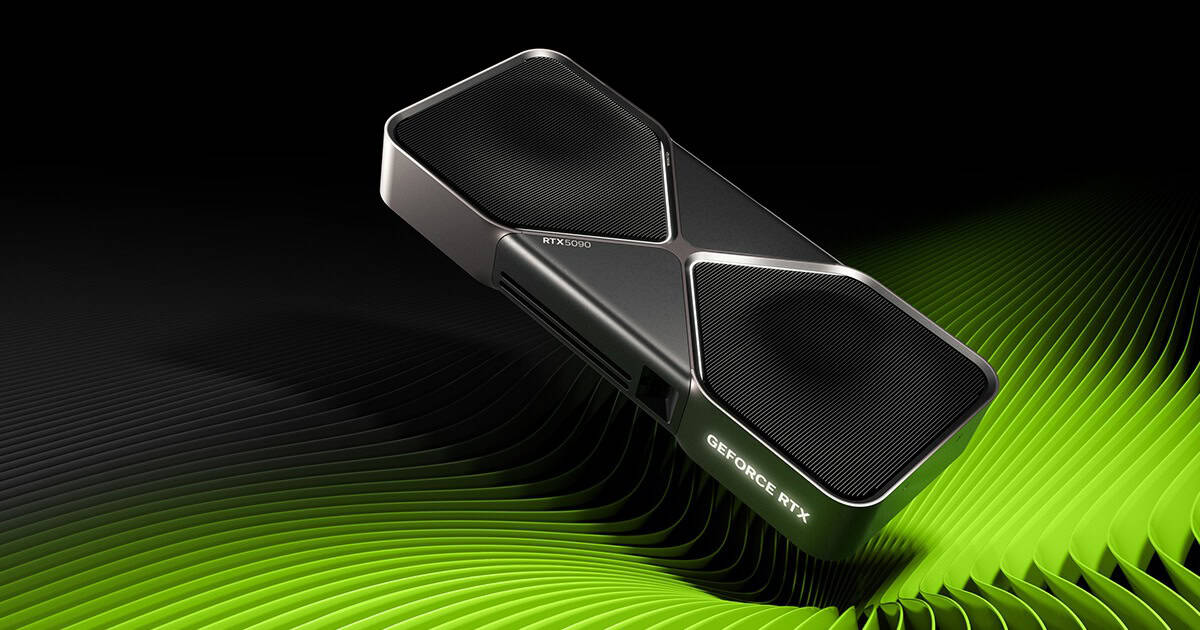The new GeForce RTX 5090 and RTX 5090D graphics cards have gained attention for outperforming the older RTX 4090 and RTX 4090D models in Blender benchmarks. This shows significant progress in rendering performance for both gamers and professionals. In summary, the RTX 5090 and RTX 5090D are strong contenders in GPU performance. However, how well they are received will depend on their value, market prices, and more benchmarks.
The latest graphics cards, including the RTX 50 series, are designed for gaming, content creation, and AI tasks. These cards feature Tensor Cores that speed up AI calculations. If you want to use Blender for AI projects like creating AI art or training models, the RTX 5090’s improved abilities could be very helpful. This creates new opportunities for Blender users interested in mixing 3D graphics with artificial intelligence.

The performance of the RTX 5090 in Blender benchmarks is exciting for 3D artists and animators. The noticeable performance improvements can help users complete projects faster and handle more complex tasks. As more benchmarks and real-world tests come out, we will better understand the RTX 5090’s capabilities. So far, the early results look promising, suggesting that the RTX 5090 might change the game for Blender users.
The RTX 5090 and RTX 4090 are high-end graphics cards suitable for professionals. These cards are often used in video editing, 3D animation, and visual effects. The boost in performance from the RTX 5090 would be especially useful for those who work on very complex scenes and need quick rendering. Casual Blender users might find that the RTX 4090 or a lower-end card meets their needs just fine.
RTX 5090 Performance in Blender: A Closer Look
RTX 5090 vs. RTX 4090: Blender Speed Comparisons
Recent benchmark tests show the RTX 5090 performing significantly better than the RTX 4090 in Blender. These tests, while still early, offer a glimpse into the performance gains users can expect. Some tests show the RTX 5090 is about 36% faster than the RTX 4090. Even more impressive, the RTX 5090D shows a 40% speed increase over the RTX 4090D.
It is important to understand that these tests used different Blender versions. The RTX 5090 was tested with Blender 3.6.0, while the RTX 5090D was tested with Blender 4.3.0. These differences can affect the results. However, the overall trend suggests a clear performance advantage for the newer cards.
Factors Affecting Performance
Several factors contribute to the RTX 5090’s improved performance:
- Architecture: The RTX 50 series is based on a new architecture. This likely includes more CUDA cores and faster memory.
- Ray Tracing: Improvements in ray tracing technology also play a role. Blender heavily uses ray tracing for rendering.
- Driver Updates: Driver updates from NVIDIA can further optimize performance.
What This Means for Blender Users
For Blender users, this means faster rendering times. This can save significant time on projects. It also allows for more complex scenes and effects. This is especially important for professionals who rely on Blender for their work.
Comparing Options
If you are considering a new graphics card for Blender, here is a simple comparison:
| Card | Approximate Blender Performance Increase (Compared to 4090) | Notes |
|---|---|---|
| RTX 5090 | 36% | Tested with Blender 3.6.0 |
| RTX 5090D | 40% | Tested with Blender 4.3.0 |
| RTX 4090 | Baseline | Older generation |
Questions Users Might Have
- When will the RTX 5090 be available? Official release dates and pricing are usually announced by NVIDIA. Check their website for the latest information.
- Will these performance gains apply to other software? While these tests focus on Blender, similar gains are likely in other 3D rendering and content creation applications.
- Are these results final? These are early benchmarks. More testing will provide a more complete picture.
Choosing the Right Card
Choosing the right graphics card depends on your needs and budget. If you need the best possible performance in Blender, the RTX 5090 appears to be a strong choice. However, consider the price and availability before making a decision. The RTX 4090 remains a powerful card and may be a good option if you find a good deal.
The Importance of Blender Versions in Benchmarks
When reviewing benchmark results, it’s essential to consider the software version used during testing. In the case of the RTX 5090 benchmarks, different Blender versions (3.6.0 and 4.3.0) were used for different cards. Blender, like other software, receives regular updates that can impact performance. These updates often include optimizations for specific hardware or introduce new features that change how the software uses the graphics card. Therefore, comparing results across different Blender versions can be misleading. A card that performs exceptionally well in an older version might not show the same level of improvement in a newer version, or vice versa. To get the most accurate comparison, benchmarks should ideally be performed using the same version of Blender across all tested hardware. This helps isolate the performance differences attributable solely to the hardware itself.
The graphics card market is constantly changing. New cards are released regularly, and prices fluctuate. Keep up to date with the latest news and reviews to make the best choice for your needs.
Short Summary:
- The RTX 5090 shows a 37% increase in performance over the RTX 4090 in Blender’s OptiX rendering engine.
- The RTX 5090D surpasses the RTX 4090D by approximately 40% in similar tests.
- Both new GPUs feature more RT cores and increased VRAM, setting new benchmarks for performance.
With the release of Nvidia’s latest RTX 50 series graphics cards, excitement is brewing in the gaming community. Nvidia has revealed that the GeForce RTX 5090 gaming GPU not only promises remarkable improvements in gaming scenarios likewise thanks to its AI-driven frame generation technology but also showcases compelling performance boosts in rendering tasks. A recent listing from Blender Open Data has revealed that the RTX 5090 excels in rendering performance, overtaking its predecessor, the RTX 4090, by a noteworthy margin.
The emphasis on the RTX 5090 has largely revolved around its gaming capabilities and AI enhancements. However, the listed benchmark results in Blender reveal that the GPU’s potential for rendering tasks should not be overlooked. The recent data indicate that the RTX 5090 achieves an astounding median score of 17,800 points when using the Nvidia-developed OptiX rendering engine on Blender 3.6.0, compared to the RTX 4090’s score of 13,000 points, signifying an impressive 37% performance enhancement.
“The new Blackwell flagship card showcases the benefits of its increased RT core count,”
said a representative from Nvidia during the latest product demonstration. It is crucial to note that the current benchmark result may change as more testing data arrives on Blender Open Data, but initial findings heavily favor the RTX 5090’s capabilities. This substantial performance improvement can be attributed to the RTX 5090’s inclusion of 33% more RT cores than its predecessor, demonstrating the effectiveness of Nvidia’s strategic enhancements.
Detailed Benchmark Analysis
A deeper look at the benchmark performance places the RTX 5090 firmly ahead of the RTX 4090. Utilizing Blender’s OptiX engine, the RTX 5090 has demonstrated that it is a powerhouse for rendering tasks, a fact that is particularly encouraging for artists and creators who rely on fast and efficient rendering. As Blender Open Data continues to grow, more comprehensive data comparisons will become available, which should provide further insights into the RTX 5090’s capabilities over time.
In comparison to its predecessor, the RTX 4090, which accumulated a median score of 13,000 points, the RTX 5090’s 17,800 points illustrate a significant performance increase. The difference is further accentuated when one considers the computational capacity offered by the increased core count in the RTX 5090, making it an appealing option for serious renderers.
“With more cores, we see more performance,”
explained an industry analyst, who also noted the overarching trend of performance improvement from one generation to the next.
Affordable Alternatives and Market Considerations
While the advancements provided by the RTX 5090 are commendable, the retail price of $1,999 raises eyebrows, especially in an era where budget considerations for gaming setups are paramount. The RTX 4090 is currently priced at around $1,599, a tough competitor considering its performance capabilities. As gamers mull their options, the possibility of finding the RTX 4090 at lower prices in the used market may entice buyers. This includes both its lower cost and solid performance record.
Moreover, with the RTX 5090D also outperforming the RTX 4090D by around 40%, users looking for professional-grade rendering capabilities will likely find the added investment justifiable. The RTX 5090D’s benchmarks indicate a steep progression in raw performance, characteristic of Nvidia’s Blackwell architecture.
Generational Improvements: Dissecting the RTX 50 Series
Moving away from the rousing numbers is essential to recognize the generational improvements that the RTX 50 series brings. Nvidia’s focus on developing GPUs with a more pronounced AI integration leads to stories about “10 times faster” capabilities, but dedicated benchmarks like those from Blender essentially ground those claims. The RTX 5090’s achievements underscore the fact that generational improvements are more modest—typically between 15% to 32%, especially evident when compared to its predecessor, the RTX 4090.
As the landscape for GPUs continues to evolve rapidly, the RTX 5090 and 5090D are positioned as leaders in ray-traced performance. Benchmarks highlight reductions in rendering time while elevating the quality of graphics and detailing in environments, making these GPUs a worthy investment for many users.
Looking Forward: The Future of GPU Performance
It is evident that Nvidia’s continued emphasis on integrating AI technologies into their GPU designs has bolstered performance in specific instances, particularly with frame generation. Users have been anticipating strides in the AI sector, and such innovations are reflected in the benchmarks. Future benchmark tests using the latest Nvidia DLSS (Deep Learning Super Sampling) technology will likely play a significant role in determining how the RTX 5090 and its contemporaries fare against competing GPUs.
A notable reviewer remarked, “
Nvidia has provided a toolset that goes beyond traditional performance measures, paving the way for gaming experiences that utilize intelligent upscaling and advanced graphics techniques.’
” This operational pivot could potentially redefine what users can expect from their graphics cards.
The Last Word on Value
As discussions intensify around the RTX 5090 and RTX 5090D’s GPU capabilities, the value of these products plays a significant role in consumer decision-making. The noticeable difference in pricing, alongside performance metrics, highlights a crucial factor for potential buyers. Nvidia may be banking on the appeal of cutting-edge performance to justify its higher prices, but these GPUs must also demonstrate value in real-world applications.
As benchmark data continues to be released, experts will closely monitor how the RTX 5090 performs in various scenarios and whether it can persuade potential buyers to choose it over existing, slightly less expensive options on the market. One thing is clear: the RTX 5090 marks a significant advancement in GPU technology. Although its price point may be high, the performance improvements introduced by the Blackwell architecture might ultimately justify the investment for many users seeking to enhance their rendering capabilities.
With a critical eye on future results and benchmarks, consumers will soon gain a comprehensive understanding of how these GPUs compare across different applications, helping both seasoned gamers and professionals make informed decisions when upgrading their graphics.







